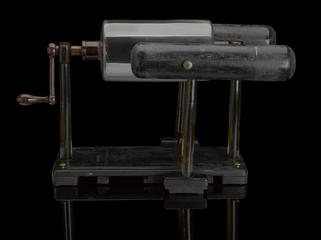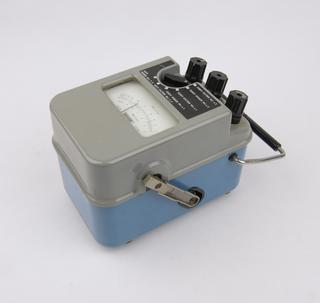
Helmholtz Resonator








One of five Helmholtz Resonators in glass, circa late nineteenth century. Probably made by Rudolph König, Paris.
Invented by Hermann von Helmholtz to analyse the composition of music and sound using resonance, these glass resonators were probably made by German instrument-maker Rudolph König in the nineteenth century. Using ‘sympathetic resonance’ – when equally tuned adjacent musical instruments vibrate in sympathy – Helmholtz proposed that musical and speech sounds were composed of different frequencies or harmonics. Helmholtz resonators are rigid containers of known volume shaped like a sphere with a ‘nipple’ in one end which when placed inside one’s ear ‘pick up’ sounds that equate the frequency of the resonator, amplifying them.
Details
- Category:
- Electricity and Magnetism
- Object Number:
- 2009-160/2
- Materials:
- glass
- Measurements:
-
overall: 70 mm 50 mm, .05 kg
- type:
- resonator
- credit:
- Purchased from Tesseract




